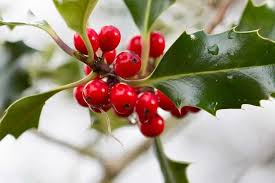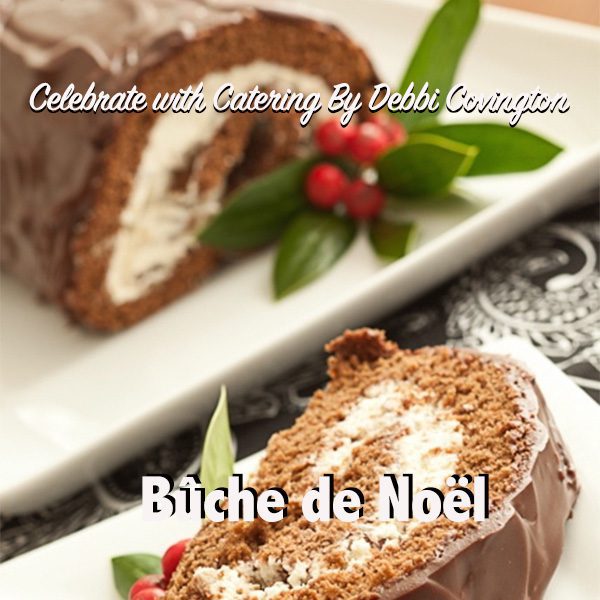 Fa La La La La! And all that. I love to sing Christmas carols. But then I love to sing anything.And I love that Holiday songs are full of references to plants and plant material – “The Holly and the Ivy,” “O Tannenbaum,” “Rockin’ Around the Christmas Tree,” “Under the Mistletoe,” and many more. Why all the emphasis on greenery at this time of the year?
Fa La La La La! And all that. I love to sing Christmas carols. But then I love to sing anything.And I love that Holiday songs are full of references to plants and plant material – “The Holly and the Ivy,” “O Tannenbaum,” “Rockin’ Around the Christmas Tree,” “Under the Mistletoe,” and many more. Why all the emphasis on greenery at this time of the year?
In northern Europe before the introduction of Christianity, people celebrated a pagan festival known as Yule. Yule coincided with the winter solstice, an event of great significance to ancient people who farmed and hunted. The solstice marked the shortest night of the year and after that time, the days slowly began to get longer and the sun higher in the sky. It was a time of renewal and rejoicing that another season of planting and fertility would eventually arrive.
In earlier Roman festivals occurring in what is now the month of December, conifers were used to decorate houses and other evergreen plants such as holly and mistletoe were used as part of the festivities. Evergreens were an integral part of Yule as well.
When Christianity was introduced, the Church found ways to incorporate pagan customs and give them religious significance. Mistletoe was said to represent vitality and eternity because it produced berries in the winter and the leaves stayed bright green throughout the cold. Holly leaves were said to represent the Crown of Thorns of Jesus and the red berries, his blood. A very far reach was the “legend of the holly bush” which proclaimed that when the baby Jesus was trying to escape King Herod’s men, a holly bush sprang up in the desert to hide and protect the holy family. It may have been not only a religious miracle, but also a horticultural miracle as well.
Holly flourishes in temperate climates to the tropics. There are over 570 different species with some having rounded smooth leaves and others with sharp serrated leaves. The most common variety of holly often pictured on Christmas cards and used in floral decorations is Ilex aquifolia.Most hollies produce flowers on male and female plants and these need to be pollinated to produce berries. The fruits ripen in the winter and provide a striking contract between the red berries and dark shiny foliage.
Holly is relatively easy to grow here with some varieties becoming as tall as a small tree. They seem to flourish in our acidic soil and the red berries are a treat just in time for the holidays. Feed hollies twice a year with a fertilizer meant for acid loving plants and they will thrive. Be certain to check the size of the shrub before you purchase a holly to make sure that you have the right plant for the right place. You do not want a large tree wedged up by your house.
Mistle toe is becoming visible at the tops of our trees right now as the trees, particularly oaks, lose their leaves. Mistletoe is a parasitic plant that takes water and nutrients from its host. It can kill a tree, but oaks seem to survive having it grow on their limbs. Mistletoe seeds or fruits are spread by birds eating them and then they pass the sticky seeds which cling to the branches andgerminate into more plants.
Ancient cultures regarded mistletoe with awe and pagan peoples felt that mistletoe represented fertility. Romans connected mistletoe with peace, understanding, and love and hung it over their doorways to protect their homes. For some reason unknown to us, the custom of kissing under the mistletoe became part of a Christmas tradition.
I love the look of mistletoe with its light green oval shaped leaves and white berries. People used to harvest mistletoe by shooting it down from trees and then they would sell it by the roadside, but not anymore. The toxicity of the berries particularly for children and pets has caused this plant to go out of favor in holiday decorations.
But we still have holly for our décor as well as the many nontoxic evergreens in our area. Fresh pine boughs smell good, but beware of the sticky sap. And how about Magnolia leaves? The dark green leaves of the Magnolia grandiflora have been used in southern homes at Christmas since colonial times. The leaves keep for a long time and can be used with holly berries, pinecones, dried fruits, and shiny Christmas tree balls for tabletop and mantle arrangements.
Enjoy this Holiday season with our cooler weather, spectacular winter sunsets, and an abundance of evergreen plants to use for your holiday decorations.







